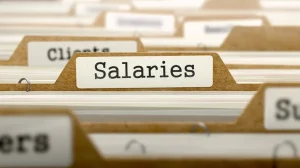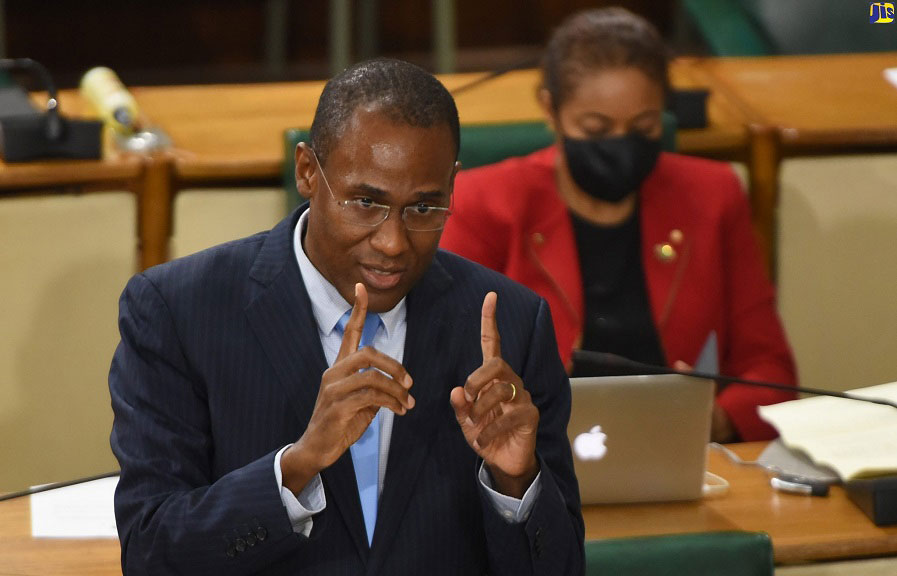

Minister of Finance and the Public Service

Kingston, Jamaica: Monday, September 6, 2021
The implementation and maintenance of a strategy to counter the fiscal risks of natural disaster are as important to Jamaica’s economic security as the preservation of foreign exchange reserve adequacy and debt sustainability.
The Ministry of Finance and the Public Service, therefore, elevated natural disaster risk financing to a strategic priority, and we have since made important strides in the implementation of a multilayered strategy.
MULTILAYERED STRATEGY
Consistent with past practice, we provide budgetary space, in annual and supplementary budgets, to enable a response to high frequency, low impact natural disaster events.
However, in 2019, we went beyond this traditional approach and capitalised our Contingency Fund with J$4 billion (US$27 million), which was a historic move at the time given that the Contingency Fund had, for decades, only held a maximum of J$100 million. By parliamentary resolution, we also increased the Contingency Fund cap from J$100 million to J$10 billion, signalling future intent.
Prior to this, in 2018, we entered into a US$285 million (J$43 billion) Contingent Credit Claim with the IDB that disburses in the event of a hurricane catastrophe, and we renewed the Caribbean Catastrophe Reinsurance Facility (CCRIF), which provides approximately US$81 million (J$12 billion) of coverage against hurricanes, approximately US$125 million (J$19 billion) of coverage against earthquakes, and approximately US$31 million (J$5 billion) of coverage against excess rainfall.
In July, we further advanced Jamaica’s strategy with the successful placement of a US$185 million (J$28 billion) catastrophe bond in global capital markets through the World Bank.
These layers – budgetary provisions; the Contingency Fund capitalisation; the Credit Contingent Claim; the CCRIF; and now, the Catastrophe Bond – address different layers of natural disaster risk from high-frequency, low-impact to low-frequency, high-impact events.
We expect to cover high-frequency occurrences such as annual rainfall, below a certain threshold, but at a level that sometimes leads to flooding, from budgetary allocations and reallocations. At the other end of the spectrum, in a low frequency, high impact natural disaster occurrence, we expect all layers to be triggered in part or in whole.
FITCH’S ASSESSMENT
Natural disasters generate the need for governments to engage in emergency public expenditure. The layers in Jamaica’s strategy collectively provide fiscal buffers for the fiscal shock that natural disasters inevitably cause. These buffers increase Jamaica’s resilience and strengthen our ability to recover from natural disasters without too significant an impairment to our economic trajectory. This lowers Jamaica’s risk and lowers the cost of investment.
Fitch, the international credit rating agency, in their published analysis of our catastrophe bond earlier this week, reported that the catastrophe bond “significantly strengthens (Jamaica’s) disaster risk mitigation strategy”. Fitch further noted the fact that this is the first catastrophe bond ever to be independently sponsored by a small country. More significantly, Fitch commented that of all the catastrophe bonds that the World Bank has issued, this is the largest in relation to the size of the sponsoring country’s economy.
WHAT IS A CATASTROPHE BOND?
A catastrophe bond transfers catastrophic natural disaster risk from a sponsor (in this case Jamaica) to international capital market investors. It is a form of insurance that achieves our objectives by creating securities in which investors can invest principal, enjoy the premiums paid during the term of the contract, and accept the risk that in the event of a natural disaster that breaches thresholds, some, or all, of the principal amount they put at risk is paid over to the sponsor. (Though the “bond” terminology is convenient, a catastrophe bond does not add to Jamaica’s debt stock).
In traditional insurance, after a natural disaster event, loss adjusters first assess the amount of the damage before paying out. This can be a complicated process that takes many months and sometimes, up to two years. A catastrophe bond is a form of parametric insurance where payout is triggered if/when observable and measurable features of the natural disaster event breach pre-agreed thresholds. As a result, a catastrophe bond pays out within weeks of a natural disaster without the need to assess the real loss sustained.
JAMAICA’S CATASTROPHE BOND
Jamaica’s catastrophe bond is globally pioneering the “cat-in-a-grid” trigger approach as we are the first in the world to use this. The “cat-in-a-grid” trigger places a grid over Jamaica, and surrounding waters, with each grid having a centralised air pressure threshold. Payout is triggered if a hurricane passes through a grid and has centralised air pressure at, or below, the threshold for that grid. (Note: The lower the centralised air pressure, the higher the intensity of the hurricane).
The size of payout is related to how many such grids are breached. This granular approach allows us to optimise and, for example, provide higher thresholds for geographical areas where losses are likely to be higher from a direct hit, e.g., Kingston and Montego Bay.
The World Bank Treasury acts as an intermediary between Jamaica and our catastrophe bond capital market investors. They collect the premiums from Jamaica and remit these funds to the investors in the form of bond coupons. They also hold custody of the principal invested by the investors and will pay this out to Jamaica if a natural disaster event breaches the established thresholds.
The Governments of the United Kingdom, Germany, and the United States are assisting Jamaica with grants that pay the entire premium for the catastrophe bond over the three hurricane cycles it covers, including the current one. The commitment and expectation is that Jamaica will finance the premiums on renewal as our fiscal dynamics improve.
It is important to note that Jamaica’s multilayered strategy for the management of fiscal risk of natural disaster only works for the people of Jamaica if it is consistently maintained, over the long term, beyond the life of any administration. For this reason, we are institutionalising the approach, including by providing updates on Jamaica’s disaster risk financing in the annual and interim fiscal policy papers, which are tabled in Parliament, alongside standard commentary on economic, fiscal, and monetary outcomes.
Addressing the fiscal risk of natural disaster should be a permanent strategic priority for Jamaica.
– Dr Nigel Clarke is minister of finance and the public service and member of parliament for St Andrew North Western. Send feedback to opedjamaica@gmail.com.
The Hon. Nigel Clarke, D.Phil., MP
Minister of Finance and the Public Service
30 National Heroes Circle, Kingston 4
Tel: (876) 932-4656 / 4660 / 4655
Eml: opedjamaica@gmail.com







Finance Minister, Fayval Williams, notes comments in the public domain concerning the appointment of Mr. Dennis Chung as Chief Technical Director (CTD) of the Financial Investigations Division (FID) and a proposal that the Government inserts itself into the process by over-turning the recommendation of the Office of the Services Commission (OSC).

Finance Minister, Fayval Williams, notes comments in the public domain concerning the appointment of Mr. Dennis Chung as Chief Technical Director (CTD) of the Financial Investigations Division (FID) and a proposal that the Government inserts itself into the process by over-turning the recommendation of the Office of the Services Commission (OSC).

The Minister of Finance and the Public Service is pleased to announce the appointment of Mr. Dennis Chung as Chief Technical Director of the Financial Investigations Division (FID), effective June 2, 2025.

A Jamaica Teachers Association Memorandum dated April 23, 2025 to its membership from the Secretary General, Mark Nicely, stated that the Ministry of Finance and the Public Service had outlined that payments for the increments should be made during the first quarter of the 2025-2026 Financial Year.
Stay in the know with everything going on at the Ministry of Finance and the Public Service by subscribing the MOFPS INSIDER magazine.
Stay in the know with everything going on at the Ministry of Finance and the Public Service.